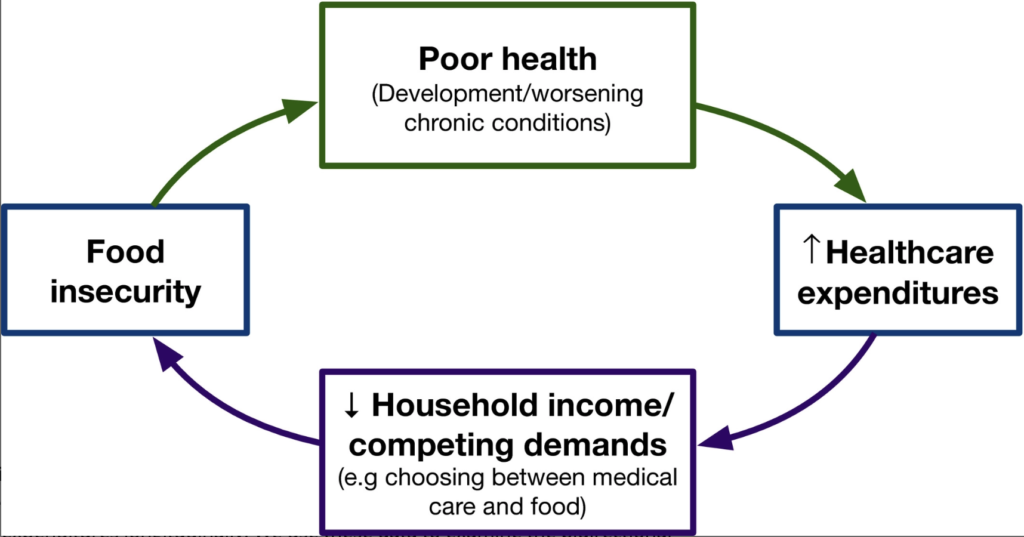
Food insecurity, which currently affects more than 60 million Americans, is a serious problem in its own right. But it is also a major driver of increased healthcare spending, according to data from the Medical Expenditure Panel Survey.
Deepak Palakshappa, MD, an internist at Wake Forest University, led a team that analyzed data from 14,666 individuals representing 6,621 families across the US. The goal was to determine how food insecurity—defined as lack of consistent access to nutritious food—during the calendar year 2016 impacted family medical expenditures in 2017.
The survey is a project of the Agency for Healthcare Research & Quality.
Just over 10% of the survey respondents met the criteria for food insecurity, a number that is consistent with other national estimates.
The message from this study is very clear: families that were food-insecure in 2016 had 20% higher medical expenditures in 2017 than did those families who had secure and consistent access to nutritious food. On average, the food-insecure families spent $2,465 more in annual medical expenses than the food-secure families (Palakshappa D, et al. Health Affairs. 2023).

On the individual level, food-insecure people had an average of $1,307 in additional medical expenses, compared to those whose families were food-secure.
This pattern held across all insurance categories (private, public, mixed, or uninsured), and the additional expenses included higher spending for emergency department visits, inpatient visits, outpatient visits, and prescription drugs.
“We know that food insecurity has a negative impact on individual health outcomes,” said Dr. Palakshappa, in a press release on publication of the study. “But we need a better understanding of the financial implications on families and health care expenditures.”
“Interventions that address food insecurity in one or more specific family members may … provide benefits to others in the home,” Palakshappa says. “And there’s a potential financial benefit for insurers to invest in these programs.”
The authors called on insurers to put more resources toward coverage of medically-tailored meals and other strategies to address food insecurity. They’re also urging practitioners to screen more closely for food insecurity among their patients.
END







